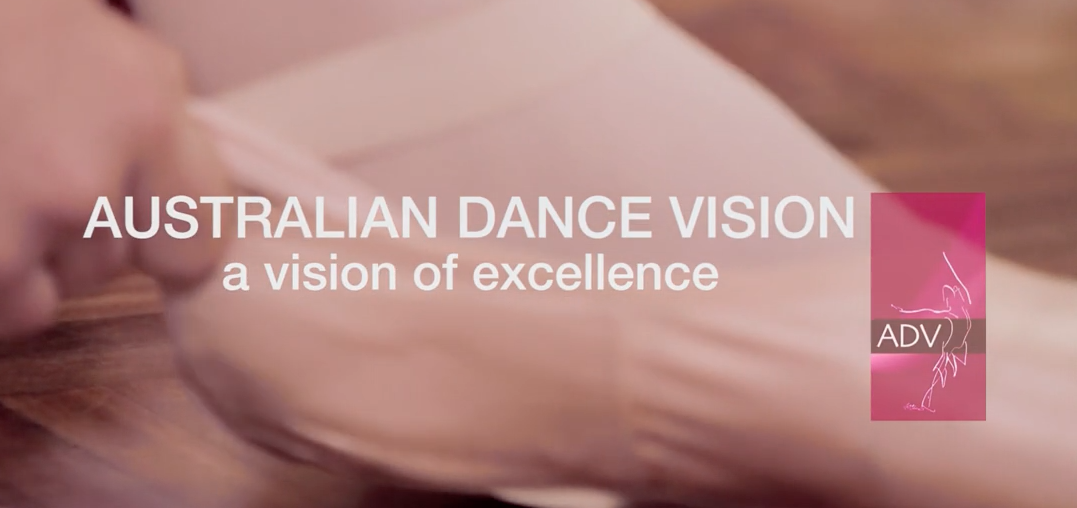Thirty years ago, Penny Lancaster had a vision. She dreamt of a new way of training young dancers, a system that would allow them to develop not just their technique but also their academic studies and professionalism.
The first incarnation of this idea was Ballet D’Action, a youth dance company for students in Sydney. Young dancers from various local schools came together to work as a team on original productions of a professional standard, with choreographers such as Natalie Weir, Garth Welch and Shane Carroll. The dancers were able to witness and be involved in other areas of the performance world, such as lighting, staging and costuming, enriching their imaginations and extending their knowledge of productions.

Penny Lancaster, creator of Australian Dance Vision. Photo courtesy of Lancaster.
Ballet D’Action began in 1989 and performed 22 original works over 10 years, dancing everywhere from the Sydney Opera House to the Town Hall.
In the meantime, whilst also running her own dance school, Lancaster began to develop her ideas for further dance education. She trained with the Royal Academy of Dancing (RAD) to Advanced level and went on to do her RAD teachers exam, but felt there were flaws in the system at that time.
“I remember thinking, ‘This is not good enough; we need to do something more than this,’” she explains. “I didn’t like their assessment method and thought they should be more educationally oriented.”
So began a journey to develop a brand new dance syllabus, one that would become known as Australian Dance Vision (ADV). The first syllabus – in classical ballet – took about five years to develop, and is constantly being improved to reflect the ever-evolving landscape of the dance industry. Over the years, with the assistance of other dance specialists, Lancaster has added syllabi for tap and jazz, and is currently working on one for contemporary dance.
ADV sets itself apart from other dance syllabi with its focus on academic education to develop not just a smart, well-rounded dancer, but a balanced and happy person as well. Aware of the dangers of eating disorders and low self-esteem, Lancaster saw the need to incorporate body science, safe dance and nutrition as complementary studies from an early age. The syllabi also progressively embed dance history and choreography to enhance students’ awareness, technique and career horizons.
“What we do at ADV is quite different,” explains Lancaster. “There are components of education all the way through.”
She also recognised the need to treat each student as an individual, rather than “pushing everybody into the same basket,” she says. Lancaster devised an option system, whereby students could sit the same exams but choose whether or not to get a grade on their report.
“Assessing the kids differently was really important to me,” she shares. “The students are assessed in a non-threatening environment. We aim to assist, not just potential dancers, but creative individuals, choreographers, teachers, dance administrators and articulate, intelligent dance audience members.”
ADV was named a registered training organisation for about 10 years, until, in 2010, it decided to form a spin-off of a new organisation and concept for vocational dance training by creating an education facility not tied to any particular dance society. This organisation, pioneered by ADV, Australian Dance Institute (ADi), is now an “Open Education” institute providing vocational dance courses for teachers and their students. It is open to a growing number of students whose dance societies’ curriculum and results have been formally “mapped” by ADi to national qualifications and recognised as prior learning by ADi.
Current recognition within Certificates I to IV in Dance has been attained by dance societies’ syllabus, including CSTD, RAD, ADV and ADA, with an increasing number of students taking advantage of ADi’s Open Learning concept. All RTO administration, course materials and training resources now reside in ADi.

Penny Lancaster and Darryl Jaffray. Photo courtesy of Lancaster.
After 50 years, Lancaster was recently reunited with an old friend from the Scully Borovansky Dance School, Darryl Jaffray. The two women were surprised to find their career pathways, although on opposite sides of the world, had taken parallel roads. At the time of leaving the Borovansky school, there was not yet a ballet company in Australia, and whilst Lancaster decided to stay on and continue her work and education in Australia, Jaffray headed to The Royal Ballet School in London. Jaffray eventually went on to become Director of Education at The Royal Ballet and, in 2006, was awarded an MBE for Services to Dance, whilst in 2002, Lancaster was awarded a Centenary Medal for her contribution to dance in the community.
Jaffray now works for the Council for Dance Education and Training (CDET) UK, accrediting colleges for the performing arts and validating dance societies. Working on something similar for Australia, says Lancaster, is the next step in her vision.
The two women were amazed to discover they have been dancing to the same tune all these years, with their concepts of dance education evolving along almost identical lines.
“Maybe it says something about why we became friends in the first place?” wonders Lancaster. “It’s really important to get it right because much unhappiness is caused by unrealistic expectations in very young dancers. Dreams are great and important but need to be strengthened with positive life skills.”
In 2002, Lancaster was awarded a Centenary Medal for her contribution to dance in the community. Today, she continues to grow and develop ADV in partnership with her husband, Chairman-CEO John Lancaster.
For more information, visit australiandanceinstitute.com.au.
By Rain Francis of Dance Informa.
Photo (top): Photo courtesy of Australian Dance Vision.

















